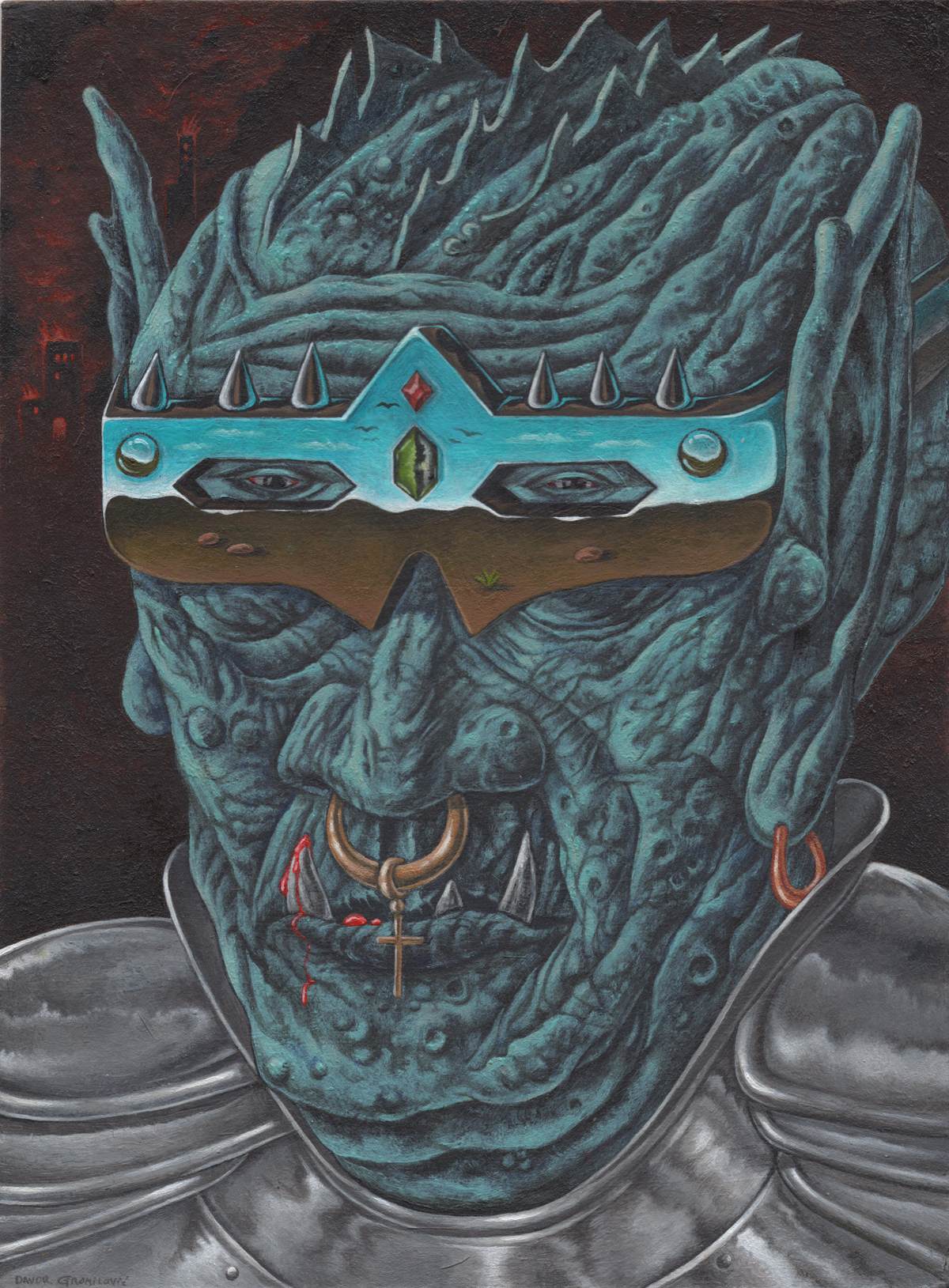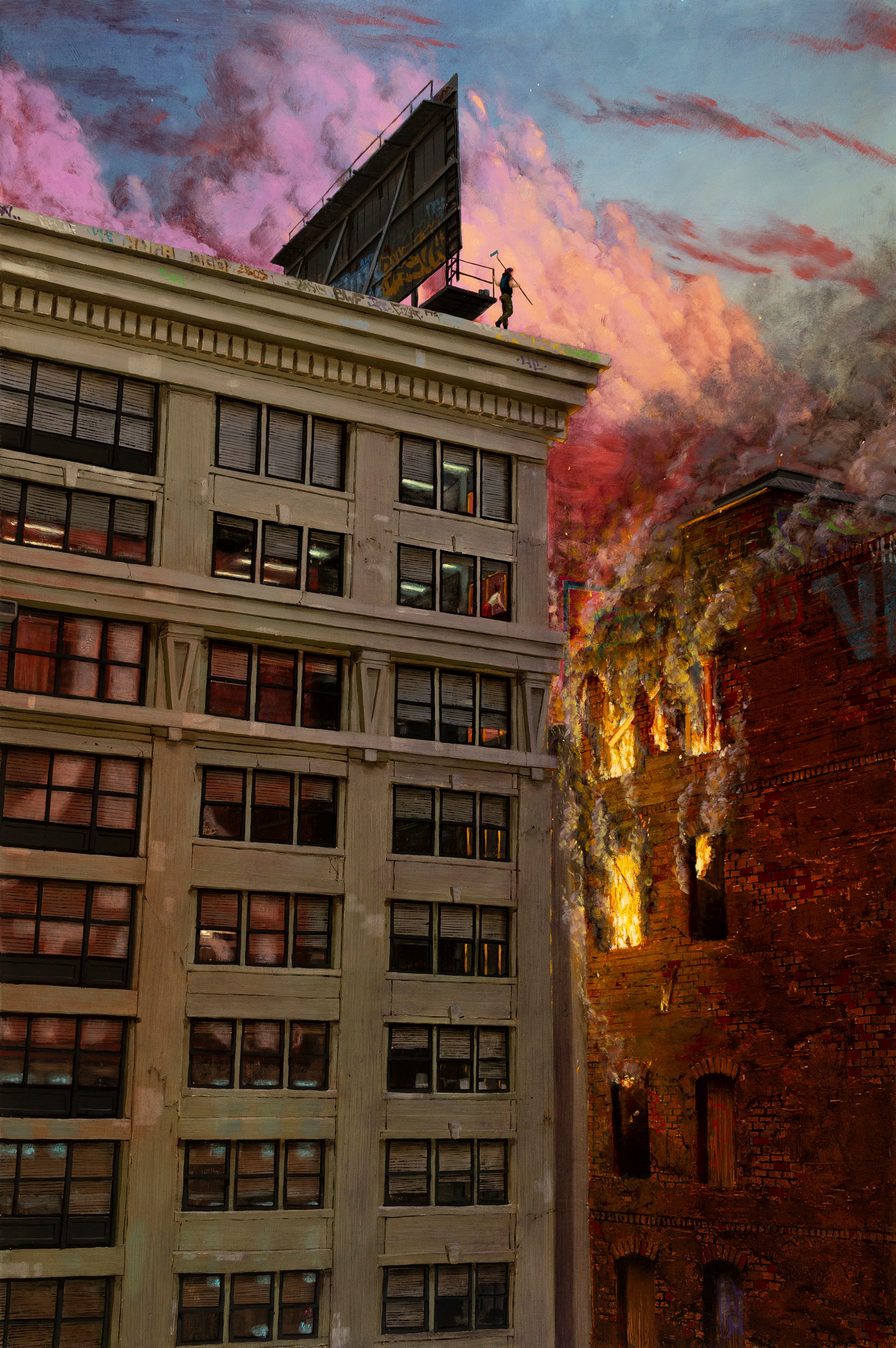Italian artist Agostino Arrivabene uses antique painting techniques to create a foundation from which metamorphic figures emerge in moments of creation. The time-consuming labor of grinding pigments and layering paints is evident in the complex, heavily textural works. New worlds hide beneath and within cracks and crinkles as human-like figures manifest above ground and often out of water.
The Milan-based artist is strongly influenced by 16th century Italian Mannerism, an anti-classical style in which body forms were elongated and light was intrinsically important. In one painting, a man with lifeless pale-blue skin looms like a giant over green moss. Oceanic vegetation rises from his shoulders and illuminated critters surround his head like a halo, as if to suggest a Jesus figure rising from the depths of the ocean. This is not the only image focused on the human head, as several paintings by Arrivabene creating moments of struggle and heaviness around the cranium of his figures — perhaps as a nod to Mannerism, which rose alongside the Protestant Reformation and Copernican Revolution.
Often highlighted with gold leaf, the paintings have ambiguous settings and confound time, leading one to question whether Arrivabene is revealing an ancient genesis or a future dawn.























 Karine Rougier’s mystical "Wild waves in our hands" touches both on our tribal nature and explores femininity. The show is staged at
Karine Rougier’s mystical "Wild waves in our hands" touches both on our tribal nature and explores femininity. The show is staged at 
 In Taylor Schultek’s riveting oil paintings, an urban structure is as much a character as his human subjects. The connection between humanity and environment is often at play, with the art of graffiti often in progress. The artist's own history in graffiti and graphic design seem to converge in building believable backdrops.
In Taylor Schultek’s riveting oil paintings, an urban structure is as much a character as his human subjects. The connection between humanity and environment is often at play, with the art of graffiti often in progress. The artist's own history in graffiti and graphic design seem to converge in building believable backdrops. The feelings of horror and rapture collide at high speeds when viewing
The feelings of horror and rapture collide at high speeds when viewing